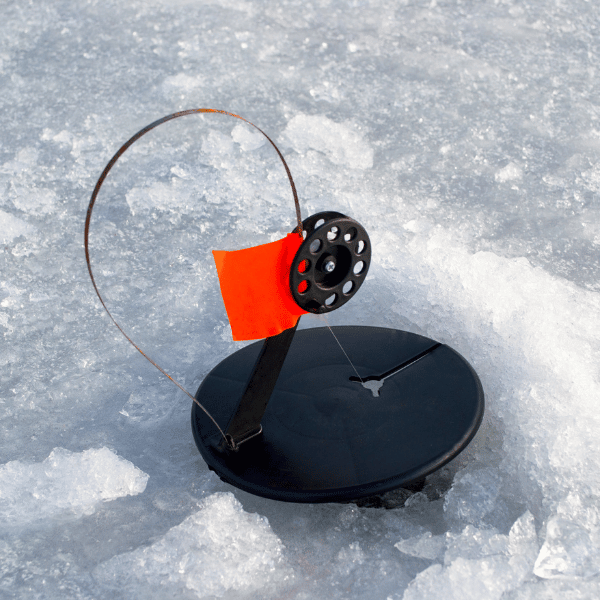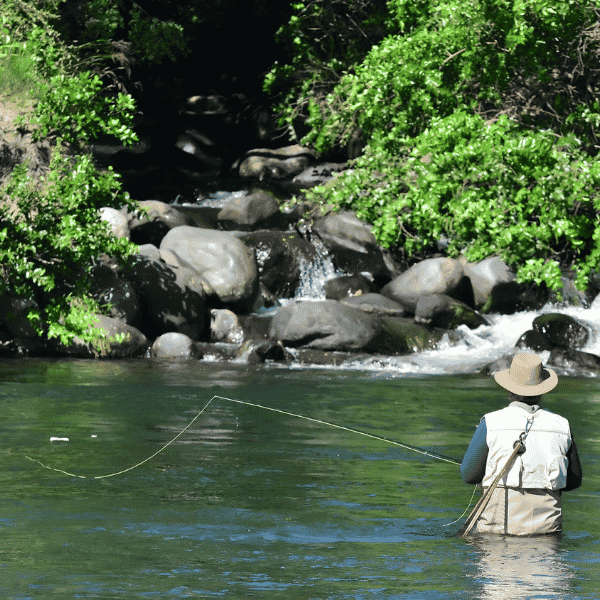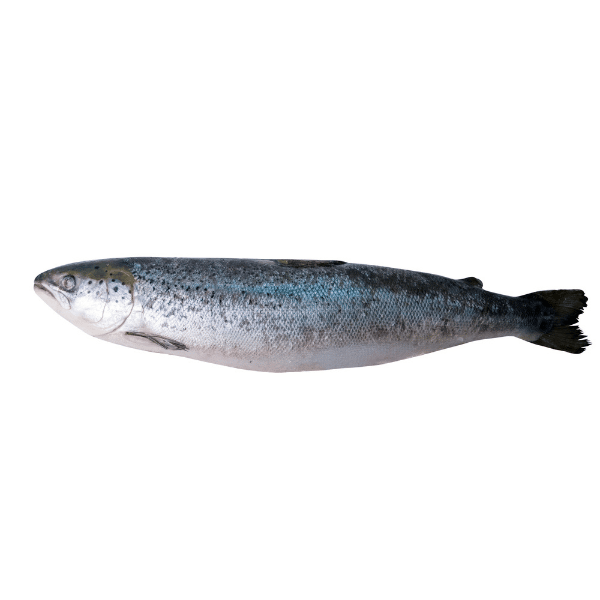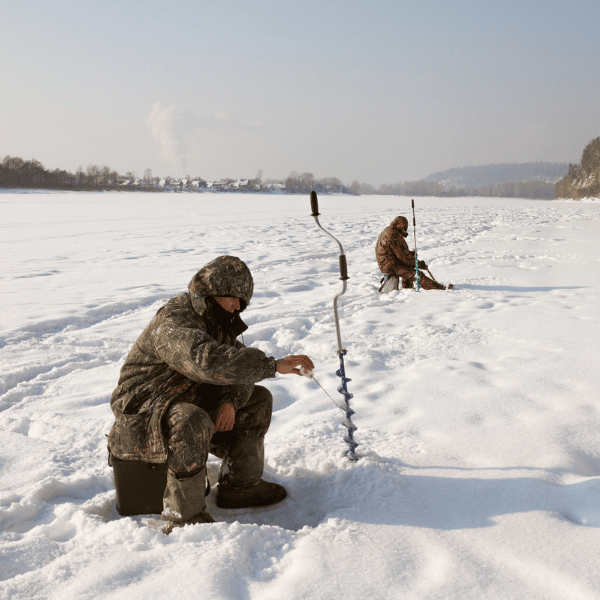How to Locate Crappie Ice Fishing in Winter
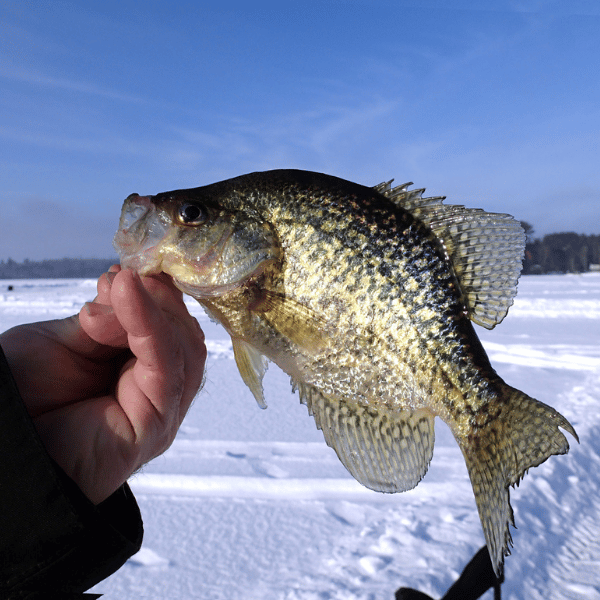
Finding and ice fishing crappie is a favorite among recreational anglers. During the winter, these prized fish tend to change their activity and movement patterns and to be able to find and fish them, you will need to have an idea of what they have a tendency to do.
Here are some things you will want to know in order to prepare for your crappie ice fishing trip and have a successful experience.
Contents
Crappie Winter Habits & Patterns

By late November, crappies tend to move out into deeper creek arms or move down to the confluence of creek channels and the main river channel.
In these areas, steep-dropping banks are likely to hold fish, especially near what is considered the primary points and channel bend.
During the winter months, crappie will generally hold in deep water. During the day when the water begins to warm up, they will move away from the deep water.
If there is an option available to them, they may choose to relocate to somewhere with greater depth. A more shallow area that they may favor in warmer temperatures will fall out of favor once ice beings to form and they need extra warmth.
In this period of time, the water is generally warmer and more stable in the deepest parts, and this is where the crappie will stay during the times you will want to fish them.
What Does Crappie Do In Winter?
First and foremost, crappie will stay deeper with the cold temperatures. Crappie gets cold just like we do, and they find their warmth deeper in the water than they usually would reside.
Crappie still feeds throughout the winter, and they will do so during the hours where the sun is not out. Crappie tends to feed when it is not very light out, and this is important to know.
Crappie spawn between May and June, and where this takes place will have a lot to do with where you will find crappie in the winter.
They will stay as close by as is convenient, but will also relocate in whatever way is available to increase their chances of survival when the winter comes.
Where Do Crappie Live In the Winter?
Generally, they will stay where they are accustomed to and where they lay their eggs. In the winter, they may move towards deep confluence pools where river channels will intersect creek channels.
In some cases, before the ice leaves, crappies will move into more shallow water. There seems to be no reason as to why they choose to do it, but in some lakes they do.
Locating the crappie in a particular body of water will involve knowing where they spawned—or at least having an idea of where.
By the end of the fall and when the cold starts coming in, they will begin to use channels and other pathways in order to find the areas that they detect will have greater depths.
By the dead of winter, the crappie will have accumulated in the areas that meet their criteria. This criterion involves a decent enough water depth to stay warm, a reasonable lack of predators, and a good amount of green weed vegetation for food and oxygen.
Best Depth for Ice Fishing Crappie
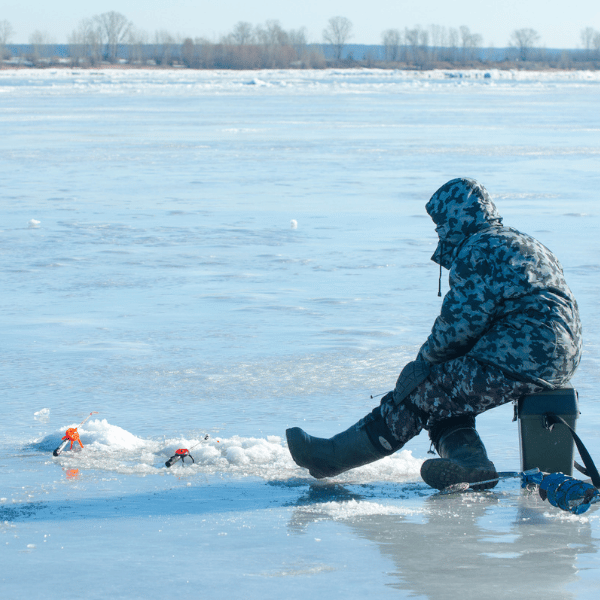
When considering depth for ice fishing crappie, you will likely find the most success when working with depths between 15 and 30 feet, but this can fluctuate.
What is important to remember is that in the coldest of winter, crappies are going to stay very low. During this time, they will spend a lot of time between 20 and 40 feet deep, if given the opportunity.
At certain points in the day, they will come closer to the surface as the day gets warmer. During the times of day that you will find the best ice fishing (early morning, late day)—they are very likely going to be as close to the bottom as they can be, comfortably.
In addition, you will want to choose a spot with a good amount of weed growth. A healthy cluster of these green weeds will cause the crappie to be attracted to this location, as these serve as a good source of oxygen for them.
Open water areas, on the other hand, are far less likely to have a population of crappie. Without these valuable resources, the crappies would not be able to survive comfortably.
How Do You Find Crappie in Deep Water
By choosing a spot with the correct depth and the correct amount of vegetation, you are well on your way to finding yourself some crappie.
If you would like to get more sophisticated, you can use electronics to get the job done. An underwater camera can be a great way to scope out what is dwelling below a particular fishing spot.
A portable sonar is another piece of tech that can be extremely helpful for this. With one of these, you can get a much more accurate reading of what is going on under the surface of the ice and increase your chances of successfully hooking crappie.
Neither of these electronics is entirely necessary and can be entirely avoided if you have the fortune to speak with some local anglers and get some ideas of where the crappie like to spend their time.
There are also several resources, websites, and apps that can assist with finding the locations that are stocked with crappie and which part of their body of water they tend to migrate to in the winter.
Locating Crappie Ice Fishing FAQ
In general, live bait is usually a better choice. You can have a successful fishing experience with plastic lures, but in the cold and less-active winter season, crappie will be going to go for live bait more often.
The two most common solutions would be a jigging rig or a tip-up rig. With a jigging rig, you will be using preferably live bait and actively moving the lure to attract the fish. This will likely bring more fish to the area as well as appear more attractive to the fish that can see it. With a tip-up rig, you’re setting up a more automated system and simply waiting for a bite.
This can come in handy when you want to have a relaxing fishing trip with less active work. You can set up multiple tip-up rigs.
Yes! Crappie is often fished for food, and sometimes for catch-and-release sport.
One of the reasons crappie ice fishing is so popular is because it rarely if ever will get too cold for crappie to be active. A fully frozen lake with outside temperatures that are extremely uncomfortable for humans will not keep crappie from feeding and staying relatively active.
Most anglers will tell you that for any sort of fishing, the times around sunrise and sunset are when you’ll see the most fish activity. For crappie, in particular, it seems that night fishing is the best chance you will get for consistent catching. These fish regulate their feeding times based on the light they are able to see, so you will not find them very ready to bite your line if it is sunny out. You can still have success in the early morning, so long as it matches the lighting criteria, but most of the veterans will tell you that crappies love to bite at night.
In the winter, this is usually the case. If you have a large lake that you know has crappie either stocked or naturally, you’re very likely to find them at the deepest points in the winter.
The exception to this is when the crappie do not have what they need to survive, such as the green weeds they feed on. If there is a spot that has a depth of 30 feet, and a spot that is 40ft, they will choose the 40-foot spot—unless the 30-foot spot has a lot of greens for them and is, therefore, more hospitable.
This rule does not apply the same during the warmer seasons, but as a rule of thumb, if you are ice fishing for crappie, you’re most likely going to find that at the deeper points of the body of water you are fishing.

